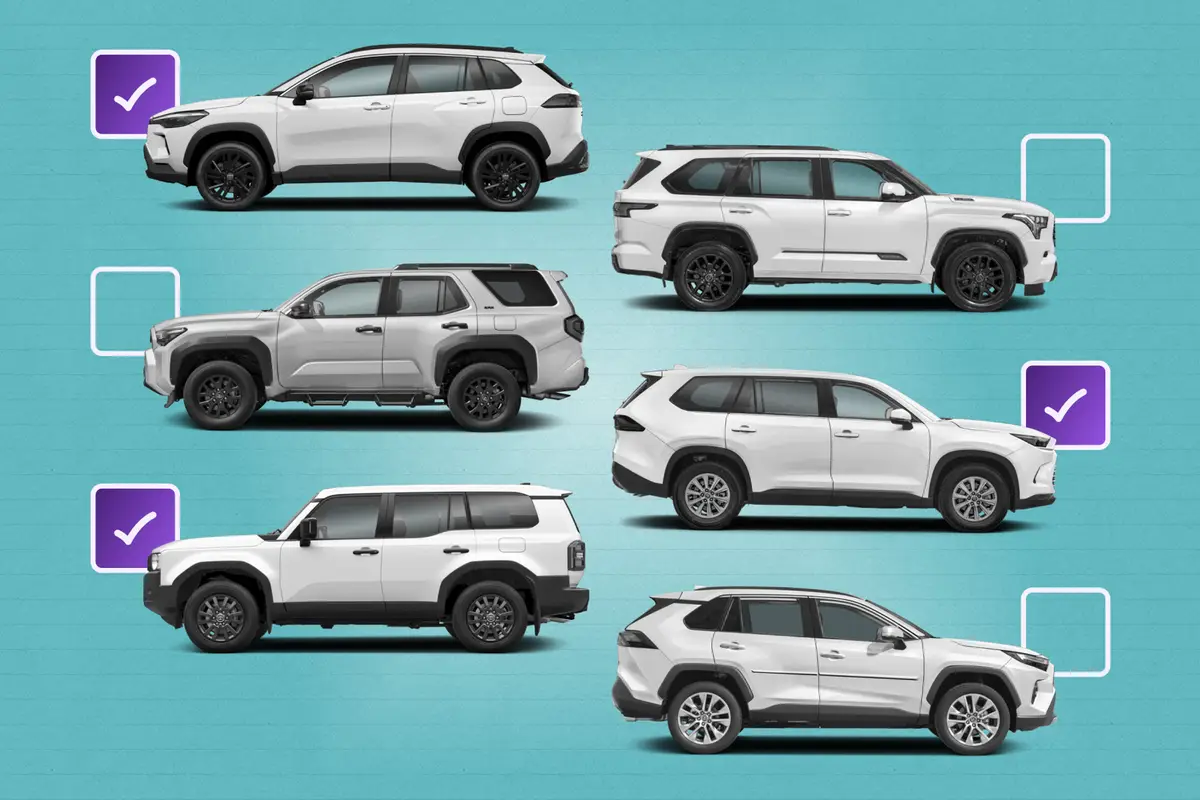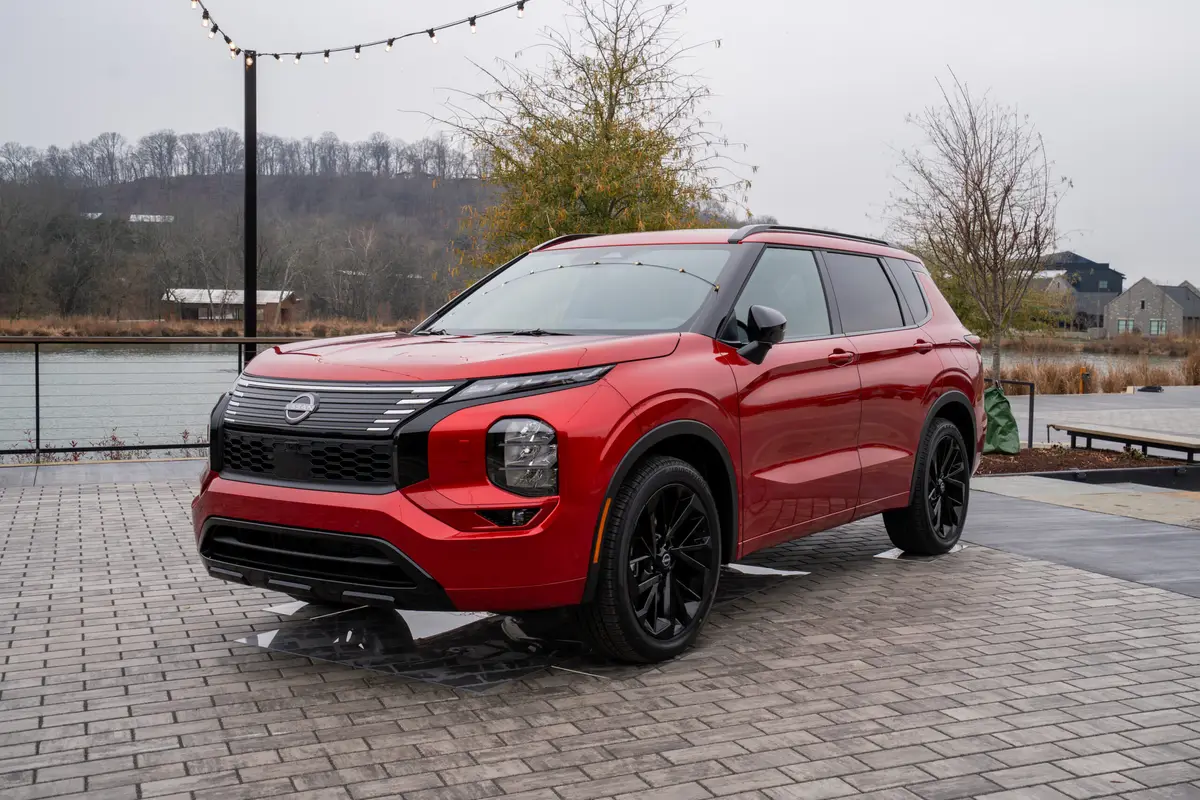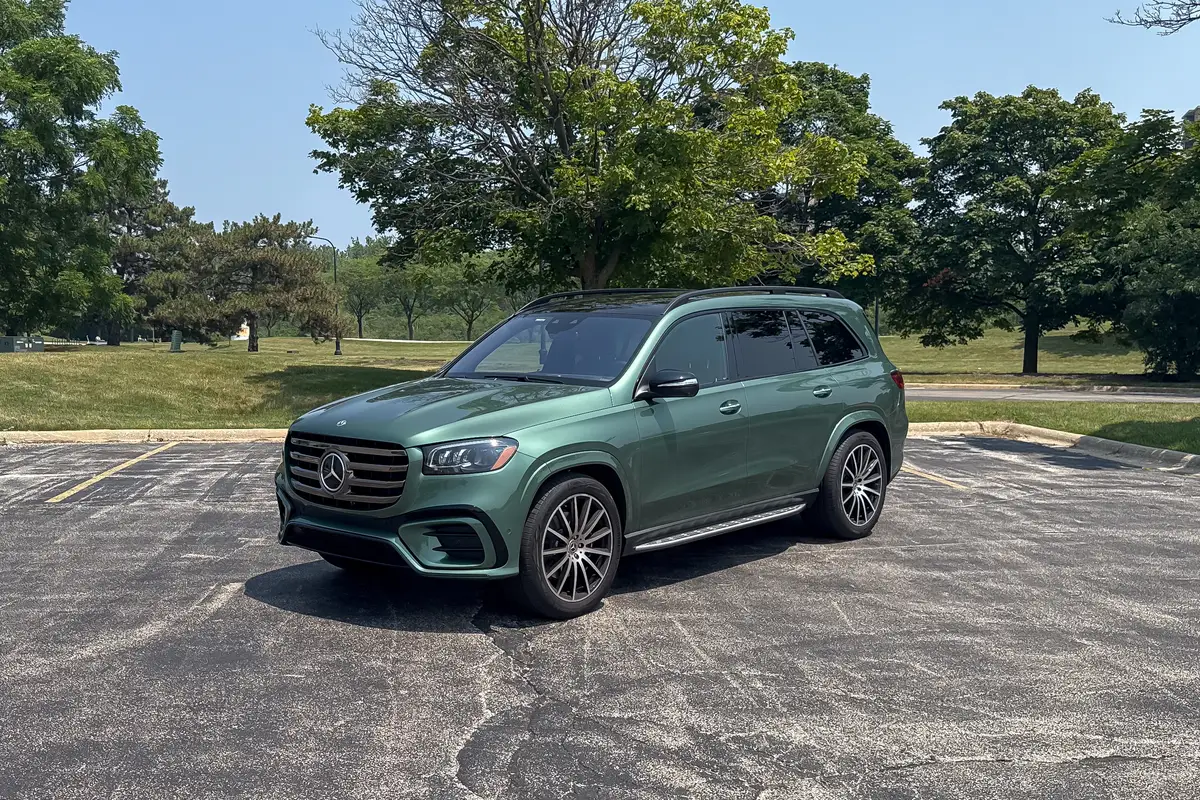IIHS Measures How Much Blind Spots Are Growing In Vehicles

Designers engaged in the practical aspects of vehicle styling have been concerned with outward visibility for decades. As the national fleet continues to grow larger, modern cars and trucks only get harder to see out of. Calling attention to that fact, a new technique developed by the Insurance Institute for Highway Safety quantifies visibility for easy comparison of models of all ages.
Related: IIHS: Intersections, Large Vehicles Are a Deadly Combination for Pedestrians
The findings are sobering. Researchers from the Department of Transportation recently applied IIHS’s technique to six vehicles from model years 1997 through 2023 and found outward visibility plummeted by as much as 58%. IIHS president David Harkey theorizes that this may factor into the recent spike in pedestrian and bicyclist fatalities, which have ballooned by 37% and 42%, respectively, over the same time period.
How Are the Blind Spots Measured in the Test?
The technique itself is rather simple: Place a camera rig in the driver’s seat and let it rotate 360 degrees, photographing the full field of vision around the vehicle. The rig is height-adjustable, allowing it to take measurements representing drivers of different heights. Computational software then analyzes that image to create a blind-zone map depicted as an aerial view of the vehicle and visible points on the ground surrounding it. Visible areas and blind zones can then be represented as percentages of the total area around the vehicle.
The breakthrough in this method is the relative ease with which it allows measurements to be taken. Previous techniques required access to detailed engineering files or parking the vehicle in an area specially marked with grid lines or cones. Researchers have also previously taken measurements similar to the new method by using lasers, and while this too was easier, it did not adequately quantify blind spots around the base of the A-pillars and side mirrors. The new camera-based system generates a more complete accounting of visibility, and IIHS says its minimal needs allow “engineers and researchers to collect data at car dealerships and other easily accessible locations.”
More From Cars.com:
- Six Models Earn Top Crash-Test Accolades From IIHS
- New IIHS Crash-Test Metric to Help Assess Risk of Brain Injuries
- Automakers Respond Quickly to New IIHS Front Crash-Prevention Test
- IIHS Study Says Partial Automation May Not Prevent Crashes
- More Safety News
Initial Findings
DOT researchers recently used IIHS’s new method to analyze outward visibility in six popular vehicles, noting decline in all of them: the Chevrolet Suburban, Ford F-150, Honda Accord, Honda CR-V, Jeep Grand Cherokee and Toyota Camry. In order to account for generational changes among the six vehicles from the 1997 to 2023 model years, they took measurements on 17 total vehicles. The study focused on a radius of about 33 feet (10 meters) around the vehicle, as that is the average distance a driver needs to stop from 10 mph and blind spots are a common factor in low-speed crashes. The DOT study also focused on the 180-degree field forward of the driver.
Taller hoods, thicker A-pillars and larger side mirrors played into a reduction in visibility for all six vehicles studied, with the CR-V suffering the greatest change. In the 1997 model, the driver could see 68% of the area in front of the vehicle. In the 2022 CR-V, that figure plummeted to just 28%. Outward visibility in the Suburban also fell to 28% for the 2023 model, from 56% in the 2000 model.
The F-150 settled at a higher 36% by model-year 2015, but it started lower, with the 1997 model scoring just 43%. The Grand Cherokee fell by a larger 12% margin, but the 2006 model’s 62% visibility meant the 2023 model’s 50% still topped the Ford.
Not surprisingly, the two cars measured performed the best. The driver could see 61% of the area ahead of the vehicle in the earliest Camry tested and 57% in the 2023 model. In the earlier Accord, the driver’s view was 65% unobstructed, and the driver of a 2023 model could still see 60% of what was ahead.
IIHS Senior Research Engineer Becky Mueller notes, “These results are notable because we already know that the portion of SUVs in the U.S. fleet grew substantially over these years as well.” Previous IIHS studies have already shown that the higher and blunter noses of SUVs increase the risk to other road users in a collision. The agency is now working on compiling data from another 150 or so vehicles, seeking to compare blind-spot size to pedestrian-crash and insurance-loss data.
Latent Desire
Just after the turn of the century, Volvo’s 2002 Safety Car Concept boasted see-through A-pillars constructed from a triangulated lattice, providing the driver a glimpse of pedestrians and other hazards that might otherwise be hidden behind a solid column of metal. While the Safety Car Concept’s silhouette eventually reached production as the hatchback C30, no automaker has yet implemented any measures to improve outward visibility. Jaguar, Toyota and industry supplier Continental have all proposed solutions involving cameras and screens or mirrors, and GM returned to Volvo’s idea of an A-pillar embedded with clear elements in a patent filed in 2022. Perhaps IIHS’s new findings will finally spur some movement in this area.
Related Video:
Cars.com’s Editorial department is your source for automotive news and reviews. In line with Cars.com’s long-standing ethics policy, editors and reviewers don’t accept gifts or free trips from automakers. The Editorial department is independent of Cars.com’s advertising, sales and sponsored content departments.
Featured stories



